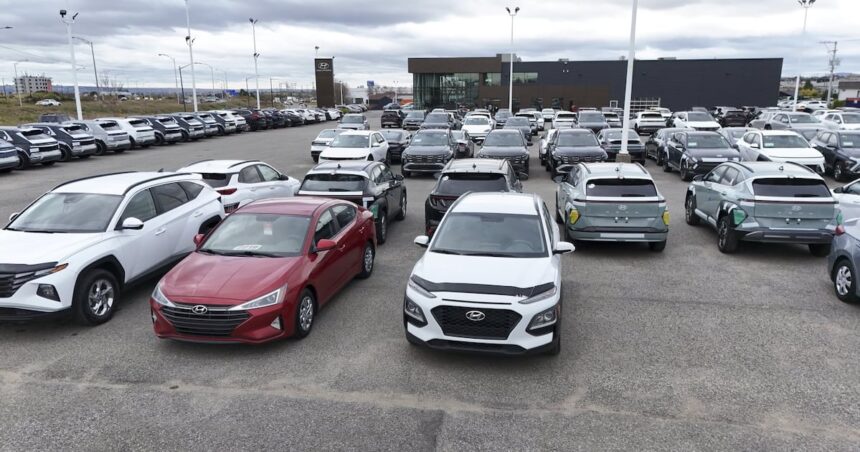The Canadian automotive market continues its recovery trajectory, with June sales figures showing a 3.4% increase compared to the same period last year. But beneath the positive year-over-year comparison lies a concerning trend that has industry analysts raising eyebrows – a gradual deceleration in growth momentum that could signal challenging times ahead for the sector.
According to the latest data from DesRosiers Automotive Consultants, approximately 169,800 new vehicles found homes across Canada last month. While this represents the 18th consecutive month of year-over-year sales growth – a remarkable recovery streak following the pandemic-induced market collapse – the pace of that growth has noticeably slackened.
“We’re witnessing what appears to be a natural cooling in the market after the intense recovery phase,” said Andrew King, managing partner at DesRosiers. “The question facing the industry now is whether this represents a temporary plateau or the beginning of a more protracted slowdown.”
The sales figures arrive against a backdrop of persistent economic headwinds. Interest rates remain elevated despite recent Bank of Canada cuts, and inflation continues to pressure household budgets. These factors, combined with the record-high average transaction prices that now exceed $47,000 for new vehicles, have placed considerable strain on affordability.
Electric vehicle adoption continues to be a bright spot, with EV sales climbing 26% compared to June 2023. However, this growth remains concentrated primarily in British Columbia and Quebec, where provincial incentives supplement federal rebates. Ontario, despite being Canada’s largest automotive market, continues to lag in EV adoption rates without provincial purchase incentives.
Market share battles continue to intensify among manufacturers. Japanese brands have regained much of their footing after supply chain disruptions, while Korean automakers Hyundai and Kia maintain their aggressive market penetration strategies. Domestic manufacturers face pressure as consumer preferences continue shifting toward crossovers and SUVs, categories where import brands have established strong footholds.
“The combination of economic uncertainty and evolving consumer preferences is creating a complex competitive landscape,” noted industry analyst Emma Richardson in an interview with CO24 Business. “Manufacturers that can effectively navigate affordability challenges while meeting sustainability demands will likely emerge strongest from this transitional period.”
Regionally, sales patterns reflect broader economic conditions. Alberta and Saskatchewan showed stronger growth, buoyed by relative economic stability, while Ontario’s sales grew more modestly. Atlantic Canada posted the weakest regional performance, with June sales essentially flat year-over-year.
Inventory levels have largely normalized after years of pandemic-related disruptions, with dealers reporting approximately 65 days of supply – near historical averages. This recovery in inventory has shifted market dynamics, with incentives and discounting returning to the marketplace after a prolonged absence.
As the industry heads into the second half of 2024, attention turns to whether economic conditions will stabilize enough to maintain growth, or if the current deceleration will intensify. With significant technological transitions underway and regulatory pressures mounting, Canada’s automotive sector faces a period of consequential transformation that extends far beyond monthly sales figures.
The road ahead for Canada’s automotive market remains uncertain, but one thing is clear – the easy gains of the post-pandemic recovery period appear to be fading into the rearview mirror.























